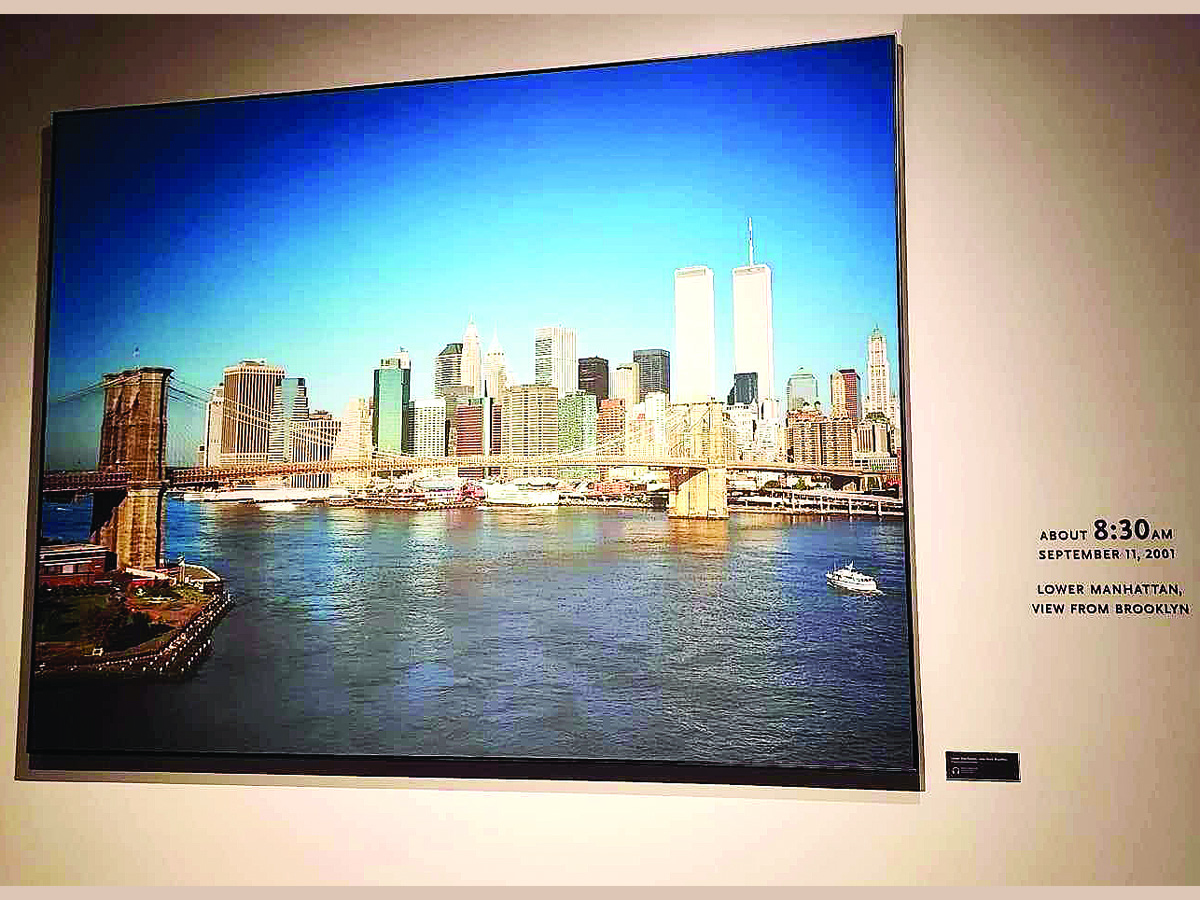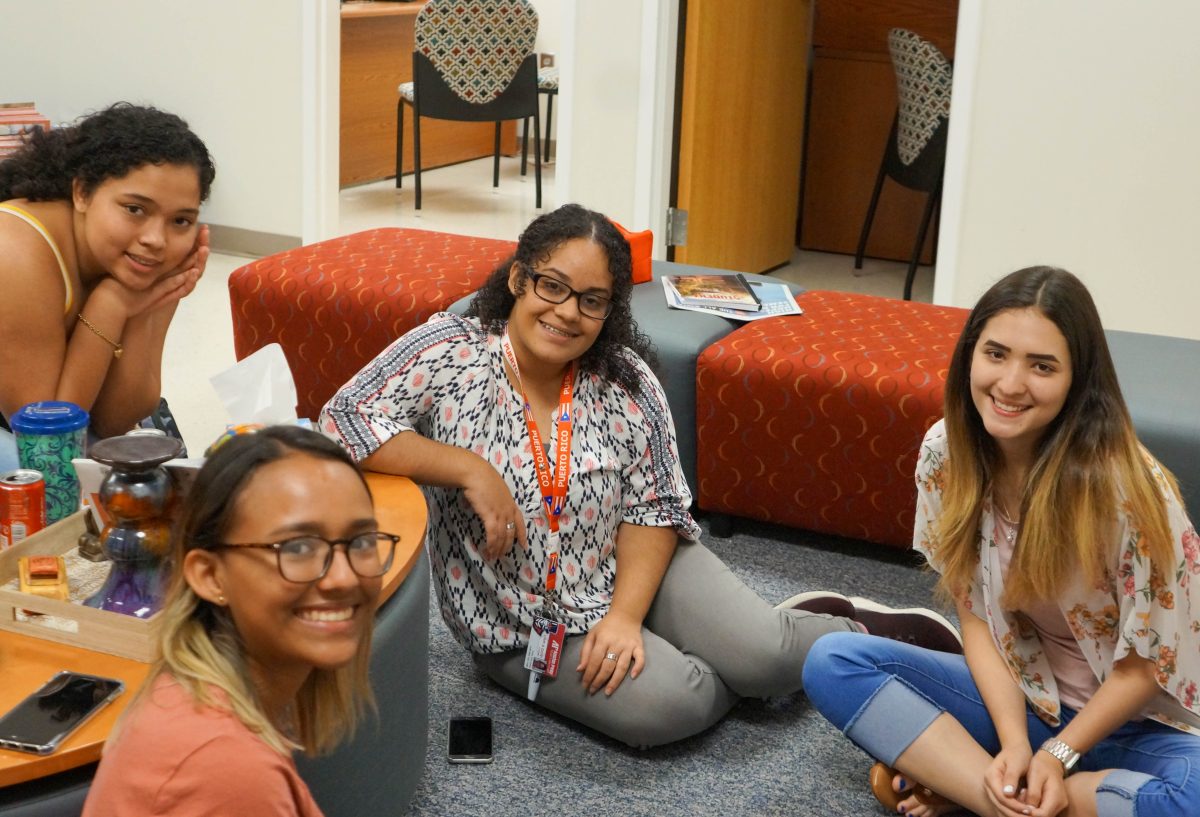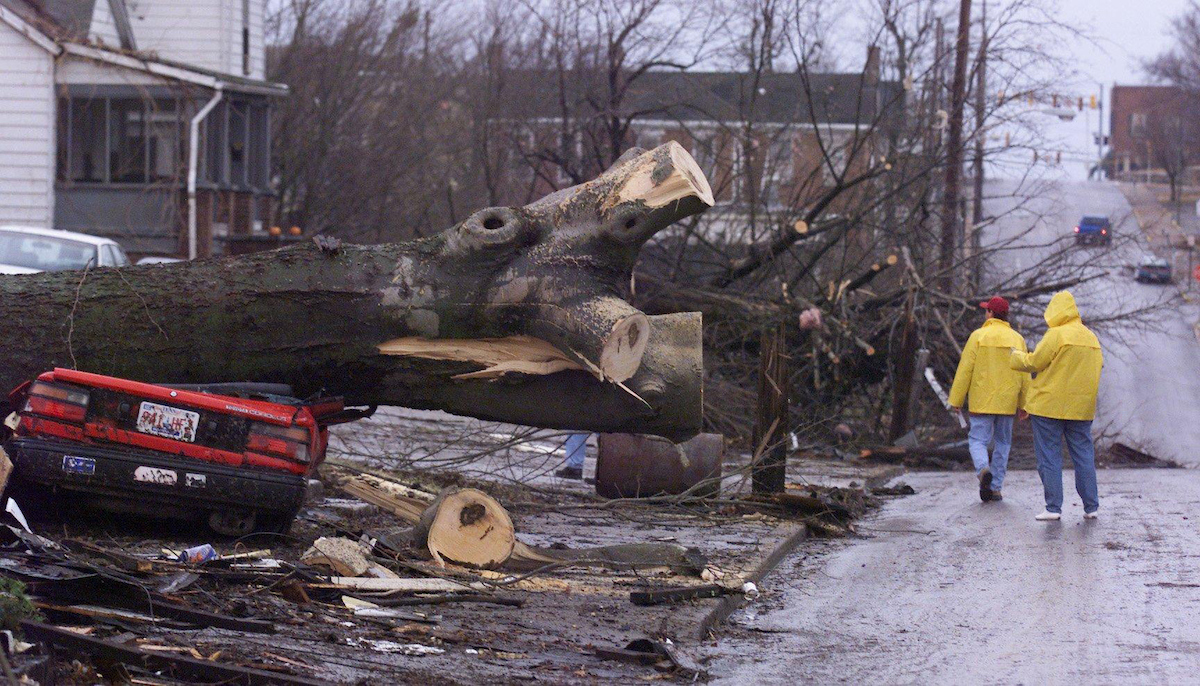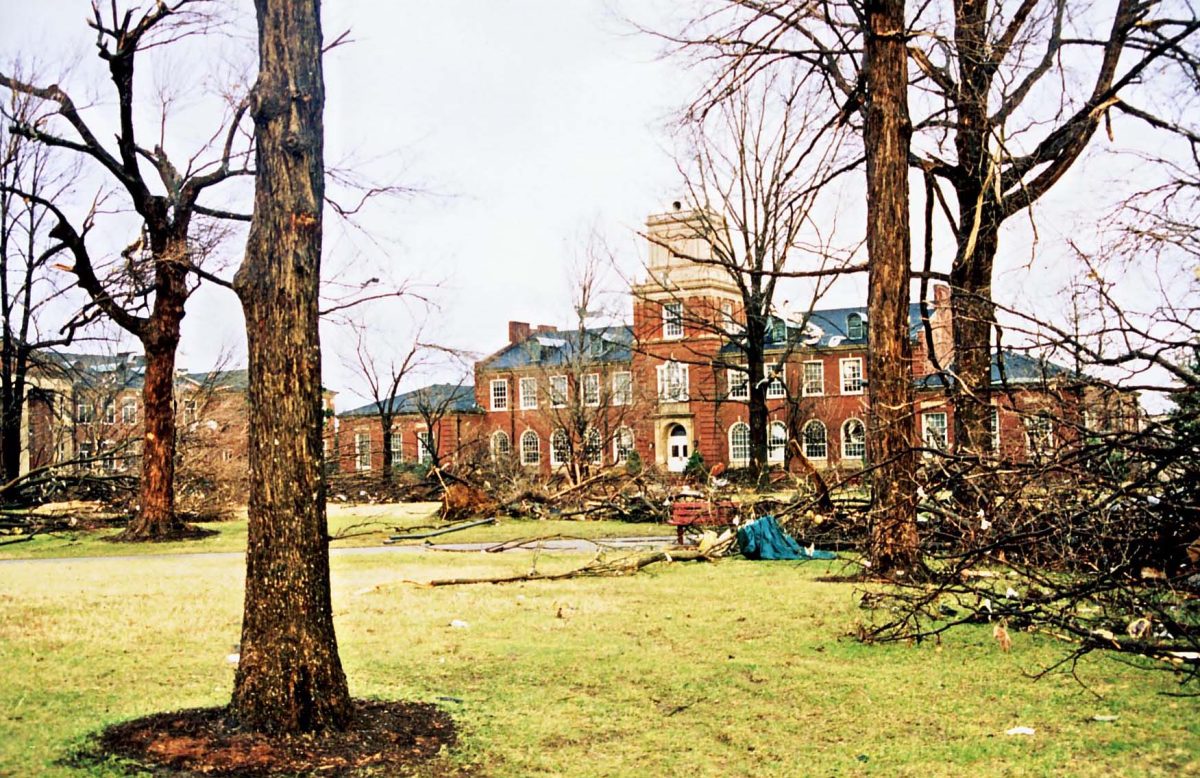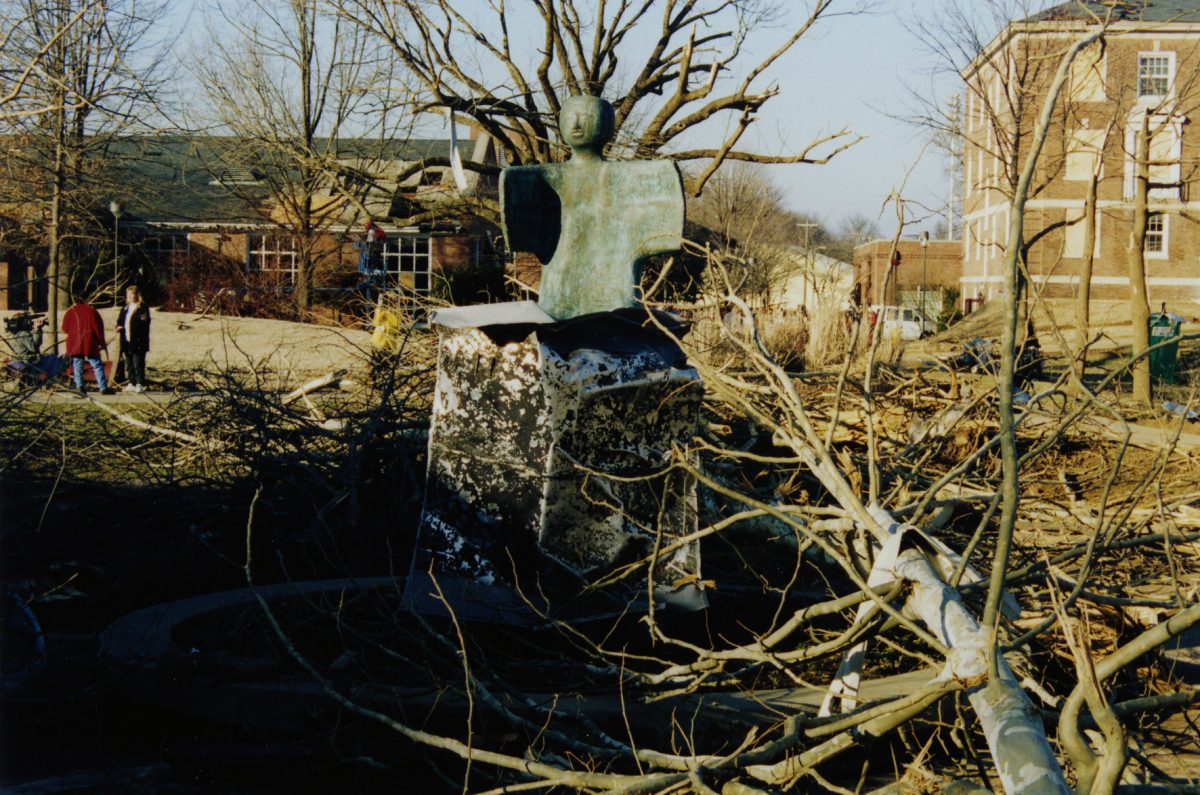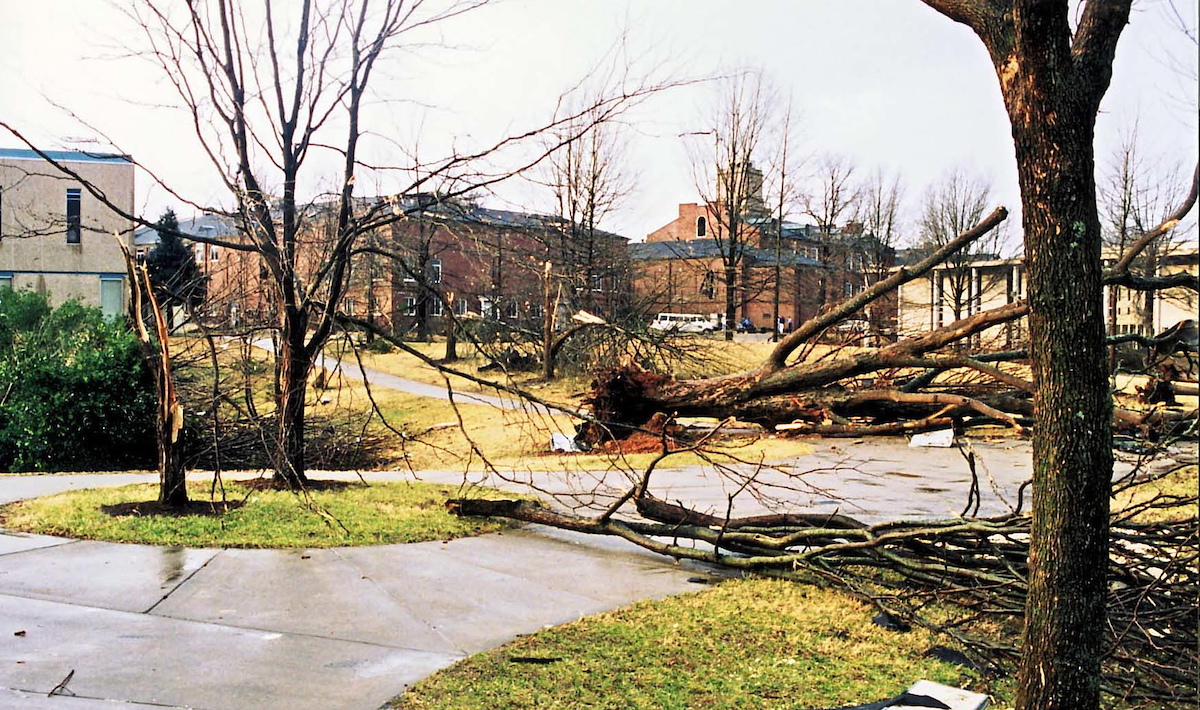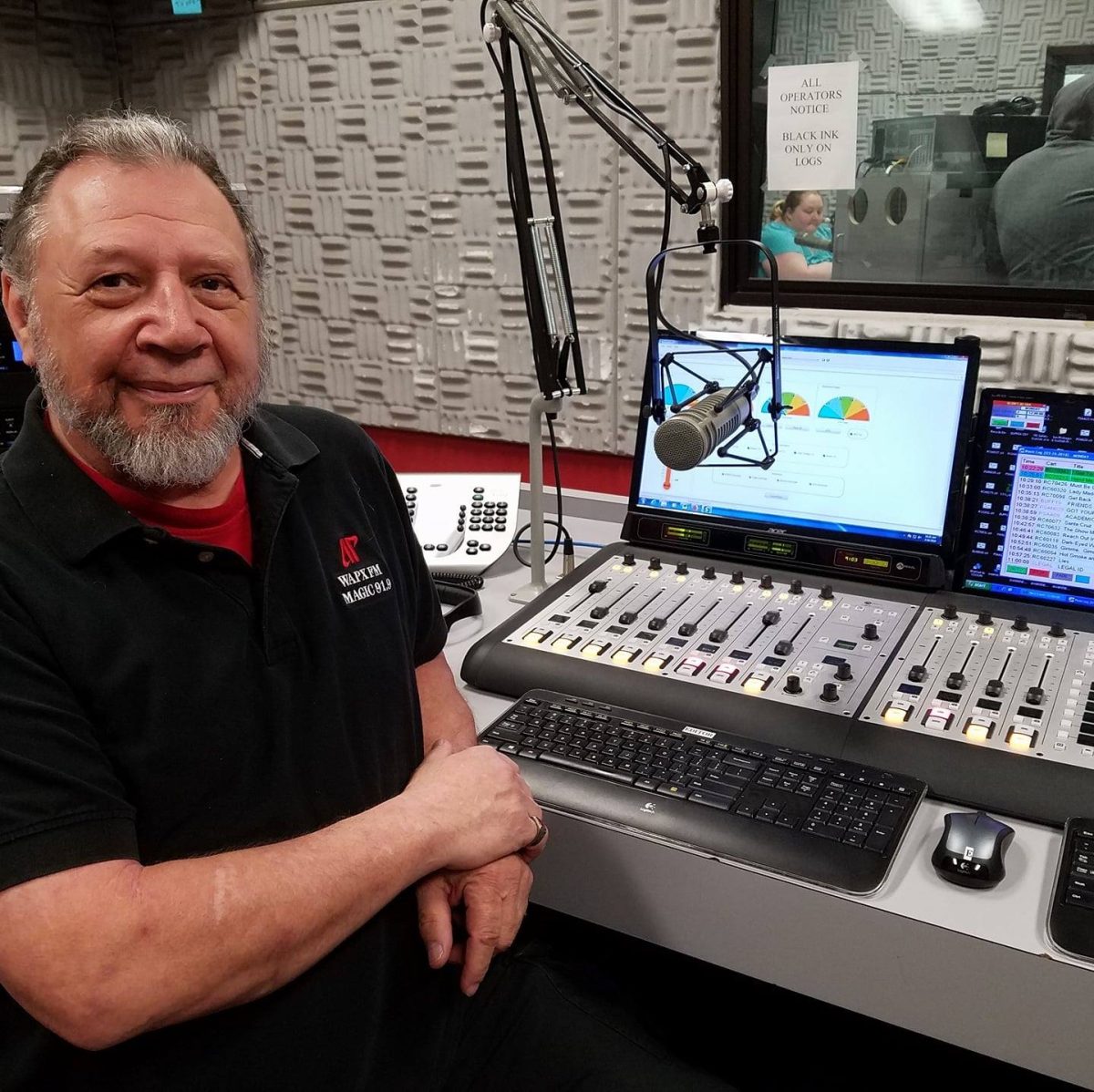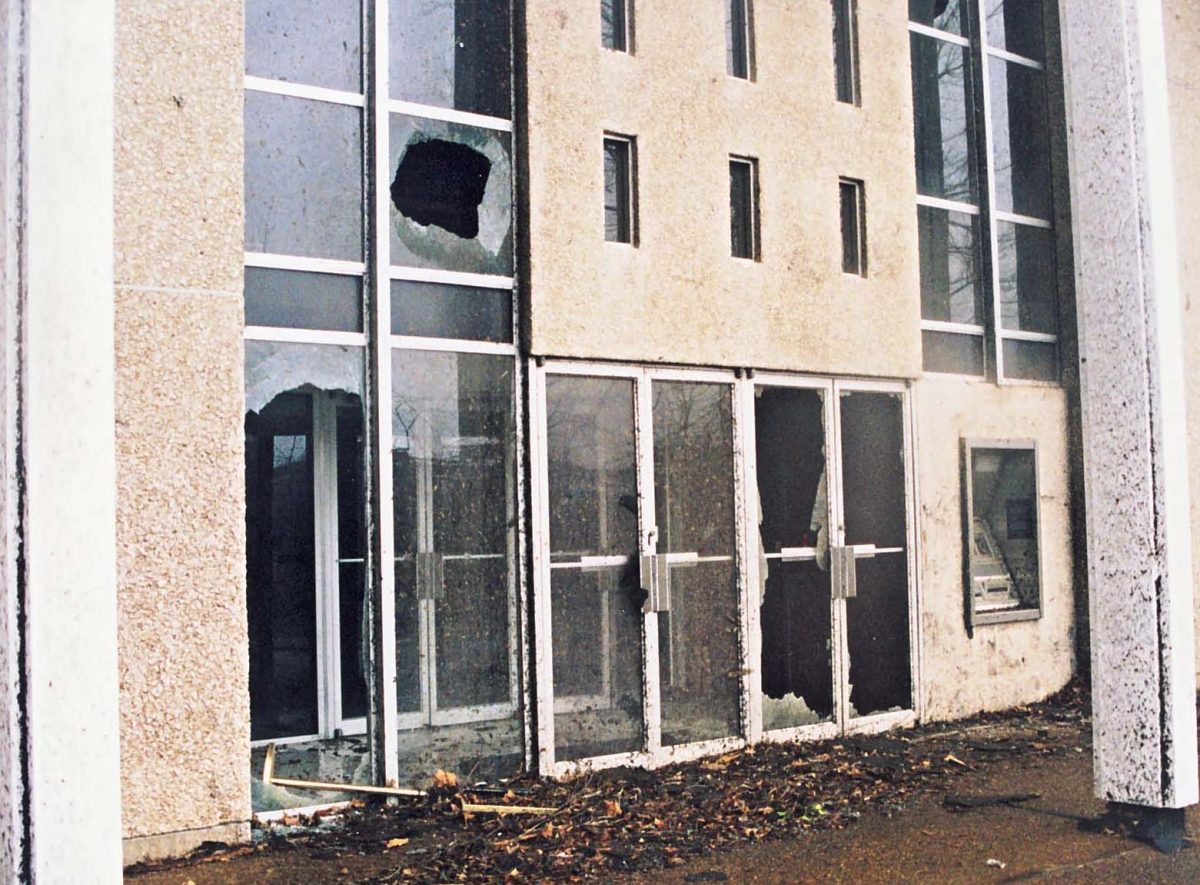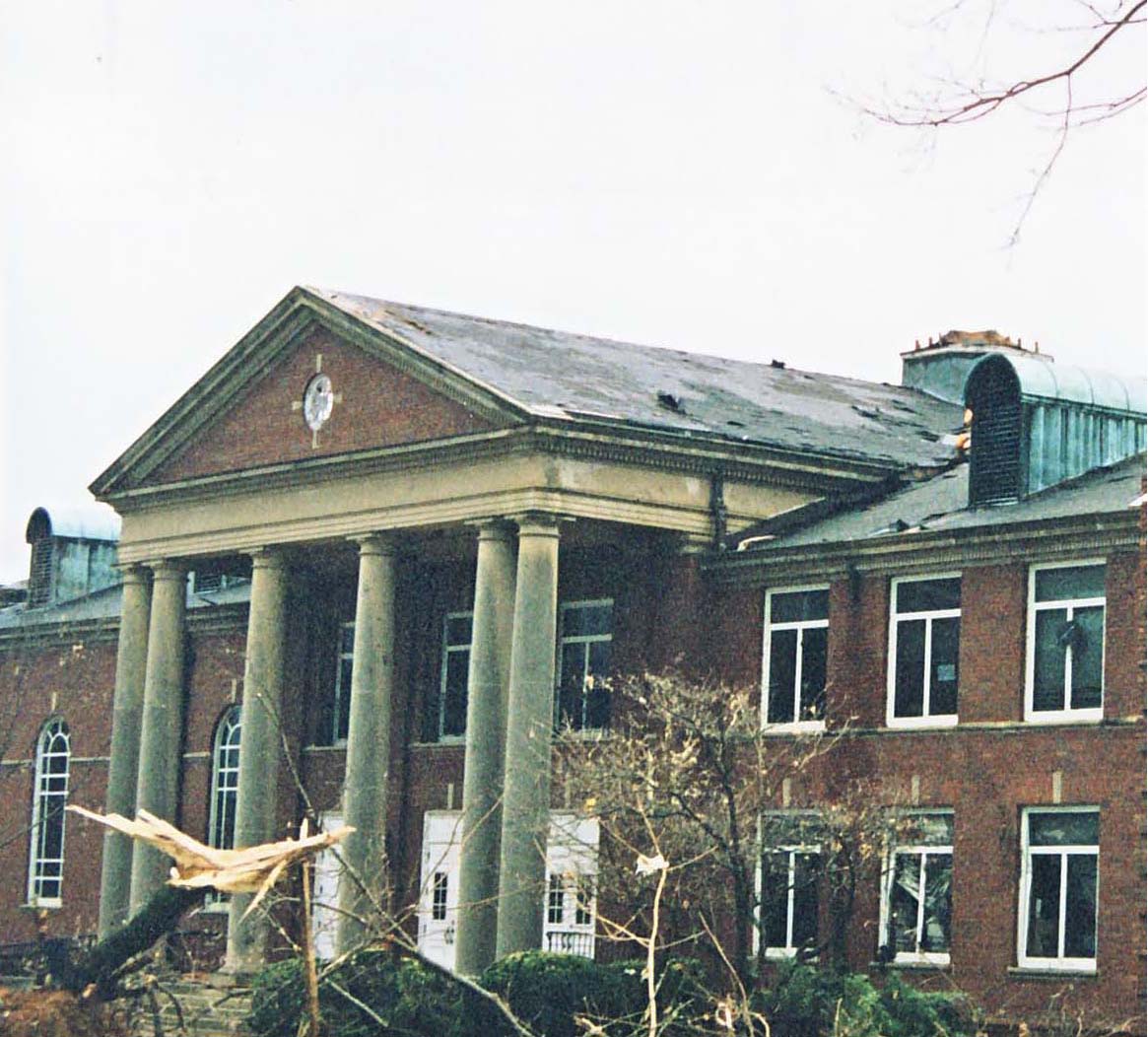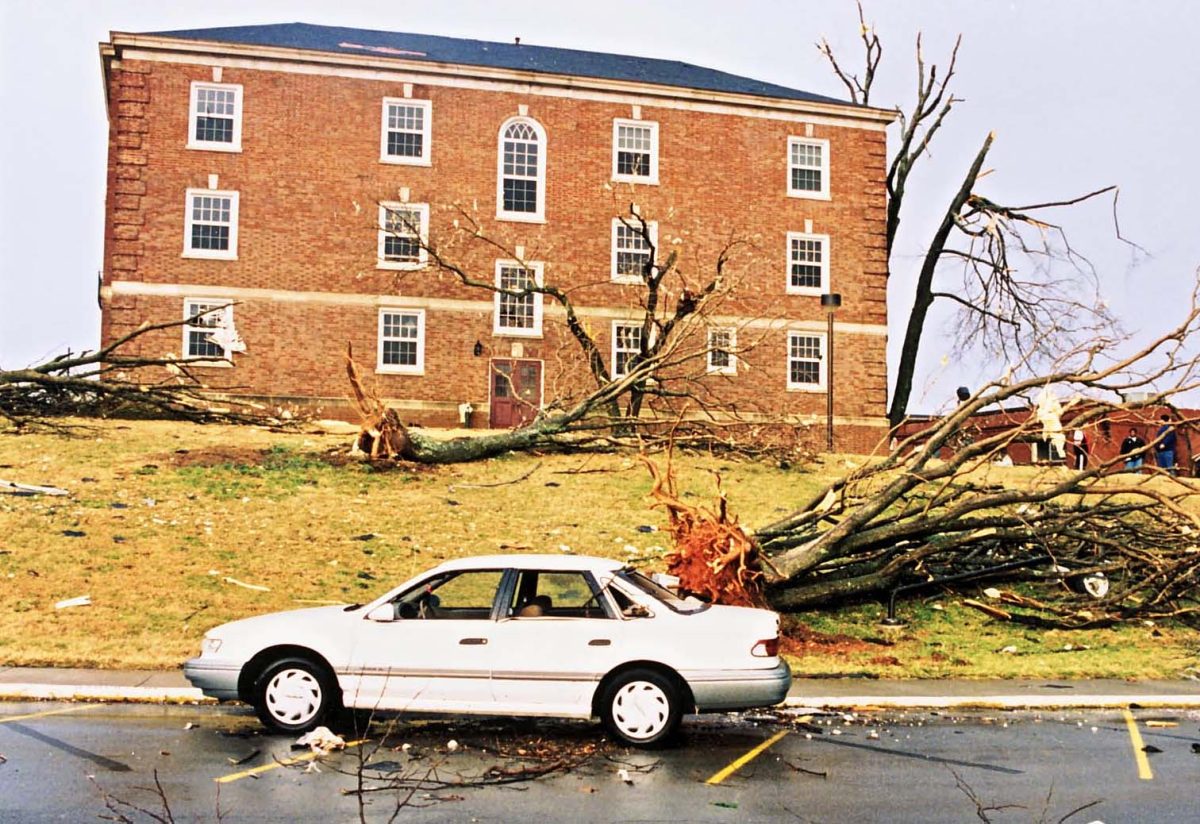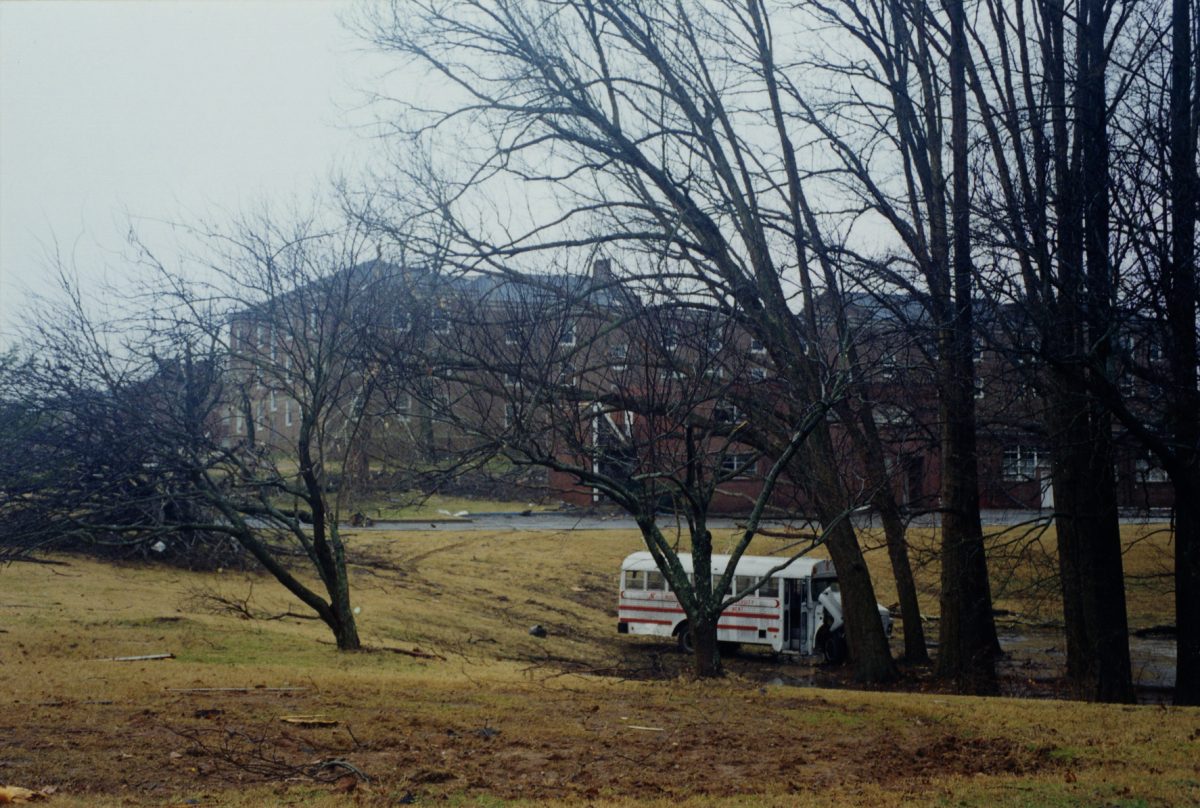A personal account by Shana Thornton | Senior, Editor-in-Chief 1999
The 1999 tornado showed the kindness and caring that exists in the Clarksville community. As the Editor-in-Chief of The All State at the time, I stayed in Clarksville, walked through the town’s rubble and talked with people about the destruction and the luck we experienced around this force of nature.

The day before the tornado was exceptionally warm, and I was outside with my boyfriend and our friends beside the Dunn Center. Other students played hacky sack and threw frisbees in the fields by the Dunn Center.
I can specifically remember the scenes of that day, as it seemed surreal to experience a faux springtime in January. I marveled at the birds swooping and playing around the fields as well. My boyfriend at the time (now my husband), Terry Morris, and his friends lived in a house beside the Dunn Center that has since been demolished for the Greek apartments.
When everyone fell asleep that night, we had no idea what was about to happen.
Early in the morning, I woke to pressure and sound that I thought was a helicopter crashing into the house. Everyone woke up and we all ran to the living room.
We were nervously looking overhead, afraid that something was going to crash through the roof. As the sound passed, we went outside, and the air had a greenish tint to it. There was no power, as an electrical transformer had exploded around the same time that the tornado passed over the house.
We looked over the damaged APSU campus. The clock tower was broken, but played “Raindrops Keep Fallin’ on My Head.”
The phone calls began around 5 a.m. I heard from reporters on The All State staff.

Many of them lived in dorms, and they were corralled and then evacuated. Hours later, Terry and I stood by the Dunn Center and watched a long line of cars leave APSU as all of the students left the disheveled campus.
We stayed in the house by the Dunn Center since it wasn’t damaged at all. Several friends (also APSU students) who lived out of the state walked over to the house and stayed with us.
We tried to call our friends who lived downtown but didn’t get an answer. As cell phones were a rare commodity at the time, we didn’t have that method as an option. Terry also worked for The All State as the circulation manager, so we decided to use our Press status and walk downtown, hoping that our friends were okay.
The apartment building where our friends lived looked like a bomb ripped it open, and we walked straight into their living room as the outside wall was gone. Of course, our friends had already left, and we didn’t see them until APSU opened again.
I took photographs of the damage and talked to other Clarksvillians. By this time, Clarksvillians were out driving and walking around town, trying to look at the damage and check on their friends, but most of the pedestrians and drivers were being rerouted and sent home.

Front page of the Leaf-Chronicle tornado coverage.
The cars passed by us on the way out of the tornado zone, so we started talking to people about what they had experienced. I collected the stories of people around the town, and many of them had already taken photographs which they promised to drop off at The All State office, and they did a few days later.
As we made our way farther downtown, we were informed that The Leaf Chronicle offices were damaged. The All State office newspaper office, which was then located in the office and storage building by the baseball field, was not damaged, so we decided to put together a newspaper with the stories we had been collecting.
Luckily, another reporter, Jerome Parchman, was still around in nearby Erin, and he was able to help us get the articles finished. I called a printer in Kentucky to find out if they could print for us. The All State staff released our “tornado” edition of the newspaper before The Leaf-Chronicle, and it felt like our opportunity to come through for the city of Clarksville when they really needed us.
We couldn’t have been as successful without the community’s encouragement and cooperation.


